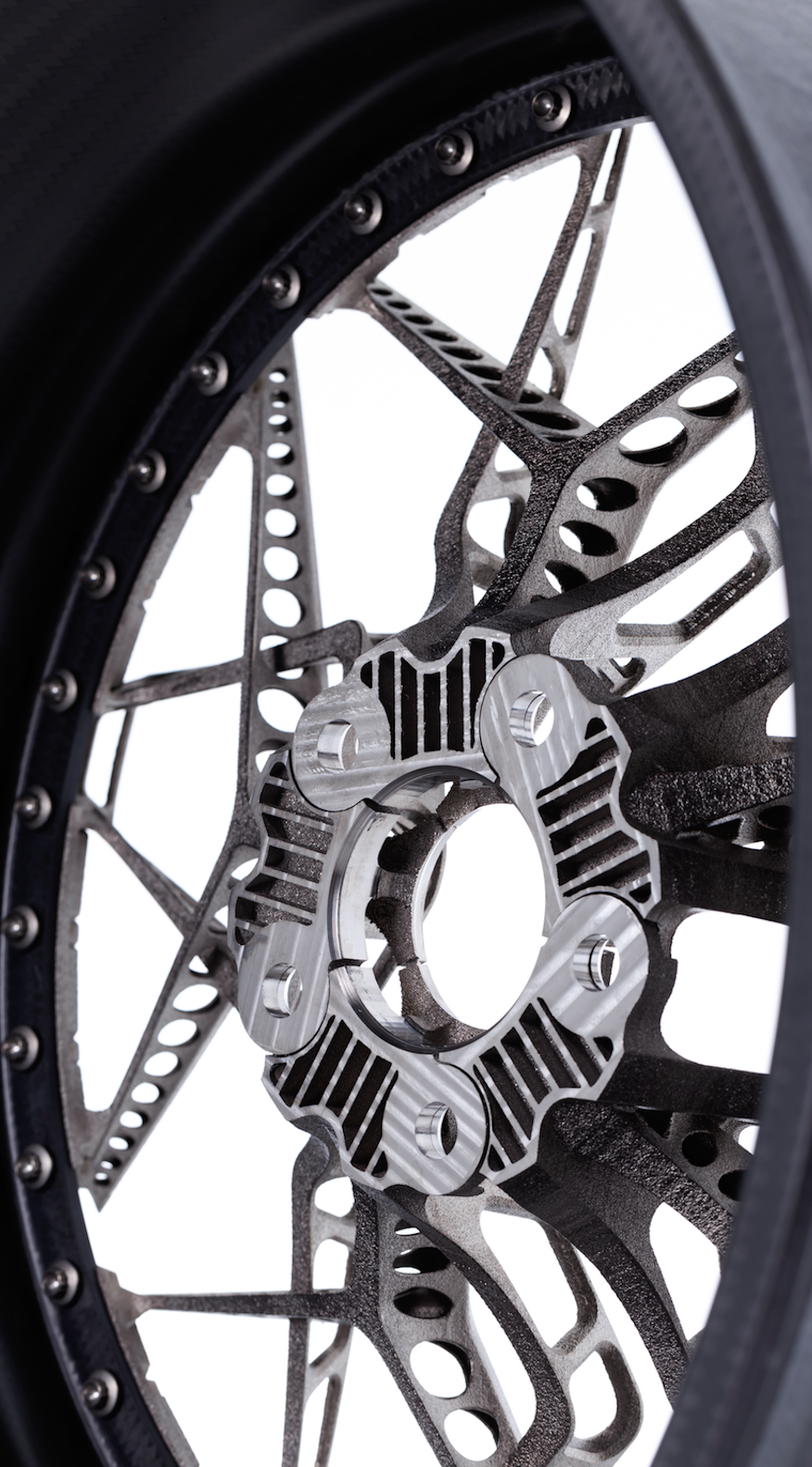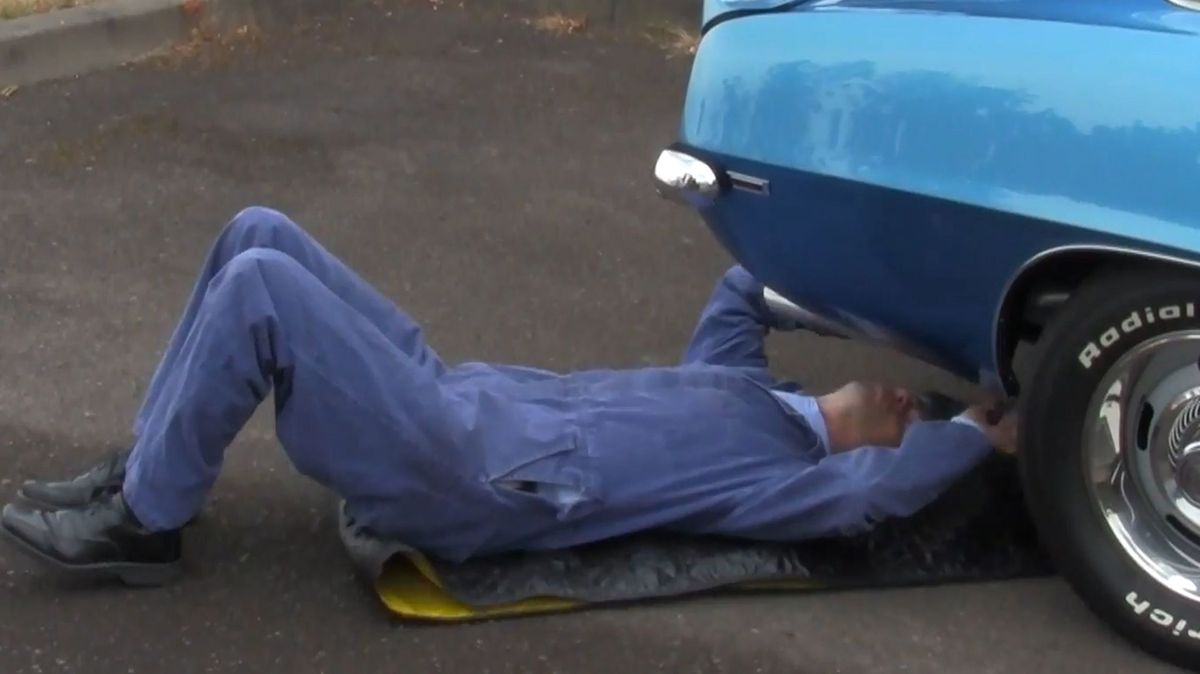Lighter wheels are faster wheels. And after decades of incremental advancements in wheel casting and forging technology, additive manufacturing (3D-printing) is primed to transform how little performance wheels can weigh and what the wheels look like.
An early example of what we can expect was produced in 2019 by wheel-building boutique HRE in collaboration with GE Additive, GE’s 3D-printing subsidiary. Their HRE3D+ wheels mated printed titanium components with a carbon-fiber barrel. The 20" x 9" front and 21" x 12.5" rear wheels weighed just 16 and 19 pounds, respectively. For high-end wheels of the same size, this saves roughly a pound in the front and two pounds in the rear.
Traditional wheels are manufactured using cast or forged aluminum alloys. These existing processes are cost-effective but suffer from material inefficiencies where extra meat is left on the wheels to give the manufacturer margin for error in meeting strength standards.
Casting’s standard process, gravity casting, is the simplest and cheapest: molten aluminum is poured into a mold and left to cure. Because the aluminum casting process suffers from porosity—which creates weak points—the wheels require more material and designs are limited to large, simple elements.
Forged wheels are lighter and stiffer (and more expensive) than their cast counterparts. The most common method is machine forging, which involves tempering a block of billet aluminum to add strength, then CNC-machining it into a wheel.
HRE’s concept wheels used GE’s electron beam melting (EBM) technology to print five interlocking individual components that formed the face of the wheel. The EBM process uses a 3-kilowatt electron beam to solidify layers of metal powder into potentially complex 3D shapes at temperatures in excess of 1,800 degrees Fahrenheit. The remaining powder can then be vacuumed away and recycled.
⚙️ Advantages of Additive, Under the Hood
GE has been working with manufacturers like Cummins to showcase the performance and efficiency advantages of 3D-printed drivetrain parts, such as pistons. The stronger, lighter pistons can be actuated faster while using less fuel.
Like wheels, pistons are traditionally produced through casting or forging, and suffer material inefficiencies—in this case, unnecessary material where the rod connects to the piston. Additive manufacturing allows for much greater control in these tight areas.
Another advantage of additive manufacturing is that these performance gains can be achieved without the added cost of tooling. Eliminating this expense could even allow small tuning shops to print pistons and other complex engine components without the need to outsource manufacturing.
The final part requires minimal finishing work thanks to a beam diameter of 140 microns—there are 25,400 microns in an inch. Unlike traditional gravity casting’s porosity, these machines can achieve nearly 100 percent material density.
While additive manufacturing offers an excellent opportunity to disrupt the performance wheel industry, it necessitates vastly different design requirements than forged and cast wheels.
“Step one in learning to design for additive is forgetting everything you know about everything else,” says Josh Mook, chief engineer and innovation leader at GE Additive. Mook stresses that EBM technology pushes the boundaries of what’s required from a material science standpoint. Despite HRE using a robust Ti-6Al-4V titanium alloy, the complicated geometries of the HRE wheels required additional support structures to suppress thermal distortion during the printing process. These scaffolds, which get removed during the finishing process, prevent the hot 3D-printed metals from sagging during manufacturing.
But how will lighter wheels make your car faster? This all has to do with the unsprung mass of an automobile, the components that aren’t supported by the suspension system—wheels, hubs, brake discs, calipers, brake lines, and tires. While these components only make up around 10 percent of the overall weight, they have an outsized effect on how your car drives.
As unsprung mass decreases, so does the workload on the suspension system. In bumpy situations, this allows the tire to remain in contact with the road for longer, leading to more traction. Lower unsprung mass also means lower rotational inertia, which allows for better acceleration and shorter braking distances.
While additive technology has yet to be seen in most production vehicles, GE Additive is currently developing a more scalable and affordable additive manufacturing solution to fill this gap.
HRE has no plans to sell these wheels at the moment, but doesn’t doubt that these types of wheels will see production at some point. The technologies behind casting and forging wheels have essentially plateaued, but additive manufacturing is just beginning to unlock a higher level of performance in the automotive industry.
🎥 Now Watch This:
Matt Crisara is a native Austinite who has an unbridled passion for cars and motorsports, both foreign and domestic. He was previously a contributing writer for Motor1 following internships at Circuit Of The Americas F1 Track and Speed City, an Austin radio broadcaster focused on the world of motor racing. He earned a bachelor’s degree from the University of Arizona School of Journalism, where he raced mountain bikes with the University Club Team. When he isn’t working, he enjoys sim-racing, FPV drones, and the great outdoors.














